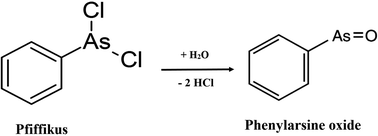Rapid and high-sensitivity determination of phenylarsine oxide in environmental samples by a new technique: solid-phase microextraction followed by corona discharge ion mobility spectrometry†
Abstract
A new, rapid, sensitive, convenient, organic-free (green) and low-cost method using solid-phase microextraction coupled with corona discharge ion mobility spectrometry was employed for determining phenylarsine oxide in environmental samples after derivatization with 1,3-propanedithiol. Response surface methodology based on central composite design was used for the optimization of different variables affecting the proposed method in order to achieve the best results. Optimal extractions were obtained with 85 μm polyacrylate fibers, extraction temperature of 74 °C, fiber equilibration time of 50 min and sample solution stirring rate of 450 rpm. Under the optimized extraction conditions, the proposed technique provided a linear range (1–100 ng mL−1), good linearity (>0.9993), repeatability (the relative standard deviations of 3.6% and 6.5% of intra- and inter-day analyses, respectively), and low limits of detection (0.3 ng mL−1). Finally, the developed method was successfully employed for the determination of phenylarsine oxide in environmental samples, including soil and well water.



 Please wait while we load your content...
Please wait while we load your content...